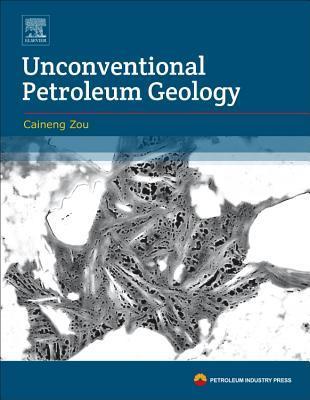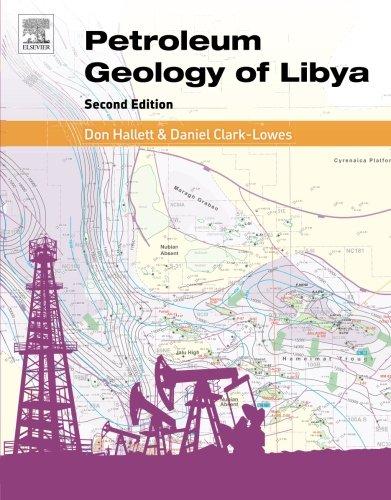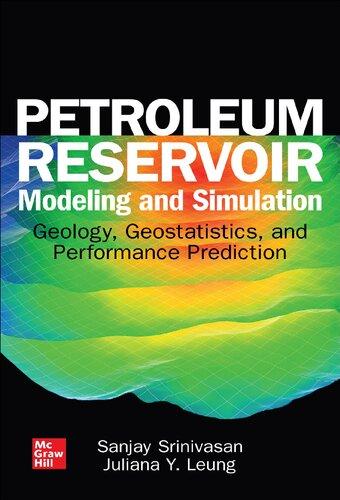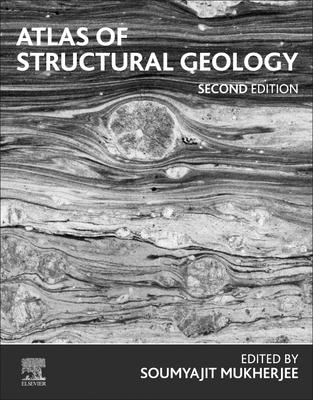
https://ebookmass.com/product/unconventional-petroleumgeology-2nd-edition-edition-caineng-zou/

Instant digital products (PDF, ePub, MOBI) ready for you
Download now and discover formats that fit your needs...
Petroleum Geology of Libya 2nd Edition Don Hallett
https://ebookmass.com/product/petroleum-geology-of-libya-2nd-editiondon-hallett/
ebookmass.com
Petroleum Reservoir Modeling and Simulation. Geology, Geostatistics, and Performance Reduction Sanjay Srinivasan
https://ebookmass.com/product/petroleum-reservoir-modeling-andsimulation-geology-geostatistics-and-performance-reduction-sanjaysrinivasan/
ebookmass.com
Atlas of Structural Geology, 2nd edition Soumyajit Mukherjee
https://ebookmass.com/product/atlas-of-structural-geology-2nd-editionsoumyajit-mukherjee/
ebookmass.com
The Zerot Infestation - Books 1-6 Lambert
https://ebookmass.com/product/the-zerot-infestation-books-1-6-lambert/




ebookmass.com
Complications of Pain-Relieving Procedures Serdar Erdine
https://ebookmass.com/product/complications-of-pain-relievingprocedures-serdar-erdine/
ebookmass.com
Win or Learn Harlan Cohen [Cohen
https://ebookmass.com/product/win-or-learn-harlan-cohen-cohen/
ebookmass.com
Feminism and Intersectionality in Academia 1st ed. Edition
Stephanie Anne Shelton
https://ebookmass.com/product/feminism-and-intersectionality-inacademia-1st-ed-edition-stephanie-anne-shelton/
ebookmass.com
Ethics in the Hebrew Bible and Beyond Susan Niditch



https://ebookmass.com/product/ethics-in-the-hebrew-bible-and-beyondsusan-niditch/
ebookmass.com
Slow Tech and ICT: A Responsible, Sustainable and Ethical Approach 1st Edition Norberto Patrignani
https://ebookmass.com/product/slow-tech-and-ict-a-responsiblesustainable-and-ethical-approach-1st-edition-norberto-patrignani/
ebookmass.com


Pillaging the Empire: Global Piracy on the High Seas, 1500-1750 – Ebook PDF Version
https://ebookmass.com/product/pillaging-the-empire-global-piracy-onthe-high-seas-1500-1750-ebook-pdf-version/
ebookmass.com


2.2 Sandy Debris Flow
2.3 lacustrine Carbonate Rock 108 Unconventional Petroleum
3. Types of Reservoirs 108 Techniques
3.1 Tight Sandstone Reservoirs 109
3.2 Mud Shale Reservoirs 115
Assessment Methods for 3.3 Tight Carbonate Reservoirs 118 5.
4. Microscale to Nanoscale Pore-Throat Unconventional Petroleum Systems
4.1 Microscale to Nanoscale Pore-
Throats

in China and Abroad
and Characteristics of 4.2 Nanoscale Pore-Throat Petroleum
4.3 Nanoscale Hydrocarbon
5. Mud Shale Pore Evaluation
5.1 Three-Dimensional Pore System Test
5.2 Nitrogen Adsorption Test
5.3 Controlling Factors for Pore Evolution
5.4 Mud Shale Pore-Throat Evaluation
Tight Sandstone Reservoir Evaluation
6.2 Diagenetic Evolution
6.3 Main Controlling Factors for Reserving
6.4 Evaluation of Tight Sandstone Reservoirs
4. Unconventional Petroleum
1. High-Quality Source Rock Systems 143
1.1 Type and Formation of Source Rocks 143
1.2 Evalualion Criteria for High-Quality
Rocks 145
Experimental Analysis
2. Continuous Petroleum Accumulation 147 Numerical Simulation Techniques
2.1 Concepts of Continuous Petroleum
Accumulation 147
2.2 Characteristics of Continuous
Petroleum Accumulation 148 Mechanism of Continuous Petroleum
Techniques for Testing the Absorbed 2.3
Contents of Coal and Shale 211 Accumulation 148
3. Evaluation of the Six Characteristics 151
7. Geophysical Techniques
3.1 Evaluation of Lithology, Oil Possibility, and Physical Properties 151 1. Logging Evaluation Techniques 213
3.2 Evaluation of Source Properties 156 1.1 Logging Evaluation of Source Rock
3.3 Evaluation of Brittleness 159 Quality 213
3.4 Evaluation of Geostress Anisotropy 160 1.2 Logging Evaluation of Lithology and 3.5 Case Study 162 Physical Properties 214
4. Method of Evaluating Sweet Spots 163 1.3 Logging Evaluation of Oil and Gas
4.1 Evaluation Criteria for Unconventional Possibility 217 Petroleum "Sweet Spots" 165 2. Reservoir Prediction Technology Based on
4.2 Main Evaluation Parameters for Tight Prestack Seismic Data 218 Oil Sweet Spots 165 2.1 Basic Theory of Prestack Seismic
4.3 Evaluation Parameters and Standards Inversion 219 for Tight Oil Sweet Spots 170 2.2 Main Technical Methods for AVO
4.4 Integral Evaluation Method for Tight Irwersion 221 Oil Sweet Spots 171 2.3 EI Inversion Techniques 222
Foreword
Thisbookprovidesasystematicdescriptionofthetheories,keytechnologies,andmaintypesofunconventionalpetroleum geologyafteranalyzingthedevelopmenttrendsinthepetroleumindustryalongwiththetheories,technologies,developmentprospects,andstrategicconsiderationsrelatedtounconventionalpetroleum.Thebookcomprisesthreeparts:Part 1, “EssentialsforUnconventionalPetroleumGeology,” includestheintroduction,aswellasintroducesthemeaningof unconventionalpetroleumgeology,unconventionalpetroleumreservoirs,andunconventionalpetroleumaccumulationand evaluation;Part2, “UnconventionalPetroleumTechnology,” describesunconventionalpetroleumresourceevaluation methods,experimentalanalysistechniques,geophysicaltechniques,andwell-drilling,andcompletiontechniques;andPart 3, “MiscellaneousUnconventionalPetroleum, ” coverstightoilandgas,shaleoilandgas,coalbedmethane,heavyoiland bitumen,oilshale,naturalgashydrate,andotherunconventionalpetroleumresources.Placingequalstressontheoretical systems,technicalmethods,andtypicalexamples,thisbookrepresentsacombinationofscienceandpracticalityinbothits contentandstructure.
Thisbookcanbeusedasatextbookforacademicandresearchinstitutesaswellasareferenceforpetroleumexplorers andresearchers.
FOREWORDI
Petroleumresourcescanbegroupedintotwobasictypes:conventionalandunconventional.Asdrillingandproduction processesadvance,thehistoryoftheoilandgasindustrycanbeorganizedintothreestages:conventionalpetroleum exploitation,conventional unconventionalpetroleumexploitation,andunconventionalpetroleumresourceexploitation. InChina,thedegreesofprovenconventionalpetroleumresources(includingtightgas)areonly36%foroiland16%for naturalgas.Thedegreeofprovenunconventionalpetroleumresourcesis2%forcoalbedmethane(CBM)andthe firststep forshalegasexplorationjuststarts.Asfarasresourcesareconcerned,petroleumcanstillmeetthedemandsofhuman societyatitscurrentrateofdevelopmentforaconsiderablelengthoftime.Thedevelopmentofunconventionalpetroleum willextendthelifeofthepetroleumindustryforanotherfewcenturies,offeringmankindsuf ficienttimetodevelop renewableandnewenergysources.
Theorycomesfrompractice,whichinturnservestheory.Theextensive,successfuldevelopmentoftightoilandgasin theOrdosBasinintheShaanxi-Gansu-NingxiaregionandInnerMongoliaprovidesexperiencesandlessonsforunconventionalpetroleumdevelopmentinChina.Afterindustrialoil flowwasyieldedbytheYan-1wellintheUpperTriassic YanchangFormationtightsandstonein1907,PetroChinaChangqingOilfieldCompany,ShaanxiYanchangOil field Company,andPetroChinaZhenjingOilfieldreportedanannualoilproductionof3547 104 tin2012.Thecumulativeoil productionis27,940 104 t.Thetotalnumberofproductionwellsismorethan100,000.In1989,Shaancan-1yielded industrialgas flowfromtheLowerOrdovicianMajiagouFormationlimestone.The1990switnessedanotherdiscoveryof extensiveLowerPermianShiheziFormationandShanxiFormationtightsandstonegasplays.The314 1012 m 3 gas producedin2012includes270 1012 m 3 oftightsandstonegasand44 1012 m 3 oflimestonegas.Thecumulativegas productionis1745 1012 m3.Morethan10,000gaswellshavebeenbuilt.In1997,PetroChinacompletedtheinstallation oftheShaanxi Beijinggastransmissionpipeline,registeringthestartofgassupplytoBeijing.ItisimperativeforChinato guidethedevelopmentofunconventionalpetroleumresourceswithasustainableoutlookandtoseeklow-costdevelopmentbycreatingadvanced,applicabletechniquesaccordingtothegeologicconditionsofeachindividualpetroliferous basin.
InanefforttopushforwardthedevelopmentofunconventionalpetroleumresourcesinChina,withthesupportofa state-of-the-artunconventionalpetroleumlaboratoryandbasedonyearsofresearchandinvestigation,Dr.Zoufromthe ResearchInstituteofPetroleumExploration&Development(RIPED)andhisresearchteampublishedthe firstandsecond editionsofUnconventionalPetroleumGeologyin2012(Beijing,GeologicalPublishingHouse)anditsEnglisheditionon Elsevierinthesameyear.Theseworksprovidesystematicdescriptionsofthemeaning,geologiccharacteristics,
distributionrules,resourcepotential,andexplorationanddevelopmenttechniquesofunconventionalpetroleum.In2013, Dr.Zouandhiscolleaguespublishedanarticleentitled “Geologicalconcepts,characteristics,resourcepotentialandkey techniquesofunconventionalhydrocarbon:Onunconventionalpetroleumgeology” in PetroleumExplorationand Development (Issue4).Inaddition,theauthorscommunicatedthetheoriesandtechnologiesforunconventionalpetroleum explorationinsideandoutsideofChinaatPetroChinapetroleumtrainingsessionsandresearchacademies.Congratulations onthepublicationofthisbook,whichoffersamasterpieceforChina’sunconventionalpetroleumprofessionals,academics, andenergyprofessionals.
LiDesheng AcademicianofChineseAcademyofScience
FOREWORDII
Dr.Zouandhiscolleagueshaveembarkedbeginningin2011onamajorefforttoputtogetheracomprehensivebook coveringoneofthetwomostimportantglobalaspectsofthefutureofpetroleumnamelyunconventionaloilandgas(the otheroneisinmyviewthechallengeofimprovedoilrecoveryinconventional fields).
Thegrowingdemandforenergyingeneraliscontinuouslygrowingduetothetwinfactorsofpopulationgrowthand improvedstandardoflivingworldwideandinChinaspeci fically.Asfaraspetroleumisconcernedtheemerging importanceofunconventionalresourcescannotbeoverstated,onlyaboutathirdoftheworld’soilandgasreservesare conventional,theremainderareinunconventionalresourcesincludingunconventionalresourcesliketightgassandsand carbonates,coalbedmethane(CBM),shalegasandoil,heavyoil/tarsands,andmethanehydrates.Theseresourcesare called “unconventional” becauseinordertoeconomicallyaccessandproducethemunconventionalmethodsandexpertise arerequired.
Mostimportantlyunconventionalhydrocarbonreservoirshavelowpermeabilityandporosityandsoaredifficultto produce.Oftenenhancedrecoverytechniques,suchasfracturestimulationorsteaminjectionetc.,mustbeperformed, makingtheprocessmoredifficultthanaconventionalplay.
UnconventionalPetroleumGeologywrittenbyDr.Zouandhiscolleaguesisabroad,updated,andatrulyunprecedentedoverviewofthekeytechnicalaspectsandprogressesofallunconventionalresourcesE&P,andtheirlatestprogressesonnanoporecharacterizationintightoil/gasandshaleoil/gasrocksinChina,hydrocarbonenrichmentand producingmechanism, “sweetspot” evaluation,andspatialdistributionandpredictionofpetroleumresources,allofwhich arefullofscientifi cvalueandpracticalsignificance.Thisbookpromisestoserveasthe firstcomprehensivetextbookever forgraduate/postgraduatestudies.TheappearanceofbothprospectiveEnglishandthisChineseversionwillmakethis uniquetextbookuseableworldwide.
IcongratulateDr.Zouandhisteamfortheirmajorcontribution.
AmosNur StanfordUniversity Member,USNationalAcademyofEngineering
Thepast10yearsrepresentthegoldendecadeofrevolutionarydevelopmentforshalegasandtightoilintheUnited States,whereshalegashasachievedcontinuousmajordevelopmentsfromBarnetttoHaynesvilleinthesouthand Marcellusintheeast,makingtheseareashotspotsforunconventionalpetroleumdevelopment.In2013,shalegasproductionwas3100 108 m3,orabout45%ofthecountry’stotalnaturalgasproduction.Tightoilhasalsoseencontinuous majorbreakthroughsfromBakkeninthenorthandEagleFordacrosstoUticaintheeast,makingtheseareashighlightsfor unconventionalpetroleumdevelopment.In2013,thetightoilproductionwas1.4 108 t,orabout28%ofthecountry’s totaloilproduction.Therapiddevelopmentofunconventionalpetroleum(e.g.,shalegasandtightoil)hasledtheUnited Statestodependmuchlessonforeignoilandgas.Asamatteroffact,theUnitedStates’ externaldependencewasonly5% fornaturalgasand33%foroilin2013.Unconventionalpetroleumhascontinuedtopropeltheimplementationofthe country’senergyindependencestrategy.ItisquitepossiblethattheUnitedStateswillguaranteeitslocalenergysecurityby realizingenergyindependenceinabroadsense.
Thepast10yearsrepresenttheexploratorydecadeofgroundbreakingdevelopmentfortightgasandtightoilinChina. Tightgashasbecomeanimportantareaforincreasingthereservesandproductionofnaturalgas,withnewproven geologicreservesoftightgasoverthepast10yearsaveraging2760 108 m3,orabout45%ofthecountry’stotalproven reservesofnaturalgasduringthesameperiod.In2013,thetightgasproductionincreasedtoaround2760 108 m 3 ,or about29%ofthecountry’stotalnaturalgasproduction.TheSuligetightgasregion,thelargestofitskindinChina,was discovered.Asoftheendof2013,theprovenandroughlyprovengeologicreservewas3.9 1012 m3,andtheannual productionwas212 108 m3.(5 10) 108 t.Reserve-scaletightoilregionshavebeendiscoveredintheOrdos,Junggar, andSongliaoBasins.MajorbreakthroughshavealsobeenmadeintheBohaiwanandSichuanBasins.AsforCBM,ground productionbaseshavebeensetupintheSouthQinshuiBasinandOrdosBasin.In2013,thegroundCBMrecoverywas 30 108 m3.InitialindustrialbreakthroughshavebeenreportedforshalegasintheSilurianLongmaximarineshaleinthe SouthandEastSichuanBasin(thecoverofthisbookisanimageofnanoporesinorganicmatterfromWei-201,the first wellinChinathatdiscoveredshalegasin2010;poresize ¼ 100 200nm).In2013,theproductionwashigherthan 2 108 m3.Tightoilandtightgashavebecomethe fi rstpartofChina’sunconventionalpetroleumdevelopment.CBM andmarineshalegaswillcomeintolarge-scaleproduction.
Inthefuture,fourinnovationsareexpectedtodominatethetechnologicaldevelopmentoftheworld’spetroleumindustry:(1)higherrecoveryforoldoil fields;(2)landdeeppetroleum;(3)marinedeep-waterpetroleum;and(4)unconventionalpetroleum.Thetheoreticalandtechnologicalinnovationsrepresentedbytheshalegasrevolutionarefacilitating theentiretechnologicalrevolutioninunconventionalpetroleum.High-resolution3Dseismicexplorationandhorizontal wellvolumetricfracturinghavebecometwocoretechniquesforexploringanddevelopingunconventionalpetroleum. Multiwellplatform-basedfactoryproductionhasbecomeanewmodeloflow-costoilandgasproduction.
Thelarge-scaledevelopmentofunconventionalpetroleumhasbroughtaboutgreatchangesinpeople’sunderstanding ofpetroleumgeology,aswellasoilandgasexplorationanddevelopmenttechniquesandproductionmodels.Consequently,numerouslimitationsrelatedtotraditionalconventionalpetroleumgeologyhavebeenidentified:(1)thelimitation ofthephysicalpropertiesofreservoirs,whichisbasedontheknowledgethattightrocksandsourcerocksareallableto formeffectivereservoirs;(2)thelimitationofcaprocksealing,whichisbasedontheknowledgethattightreservoirscan serveasthecaprockthemselvesandwaterpotentialcanalsoprovidesealingfunctions;(3)thelimitationoftrap boundaries,whichisbasedontheknowledgethatmassstratiformreservoirbodiesareabletostorepetroleumandthattrap boundariesareinsignificant;(4)thelimitationofmigrationdynamics,whichisbasedontheknowledgethatbuoyancyis insigni ficant,sohydrocarbon-generatingpressurizationandcapillarypressuredifferencescanbethemainfactors influencingmigrationdynamics,whichgenerallyfollowtheNon-Darcy fl owlaw,andthedifferentialdistributionof oil gas waterisinsignifi cant;and(5)thelimitationofaccumulationlocations,whichisbasedontheknowledgethat unconventionalpetroleumistypicallyhostedinbasincenters,slopes,andothernegativetectonicunits.
Chinahasharvested10importantobservationsfromtheoreticalresearchonunconventionalpetroleumgeology. Speci fically,researchershavebeenable(1)tosuggestthathigh-qualitysourcerockscontrolthedistributionofmain unconventionalpetroleumandthatsource reservoirparageneticassemblagesarefavorablefortheoccurrenceofunconventionalpetroleum;(2)toestablishthegeneticdistributionpatternsoflargecontinentalopen-lakeshallow-water deltasrelativetosandydebris fl owsandtransitionalorganic-richshales,openingupnewareasoftightoilandgasand shaleoilandgasinbasinslopecenters;(3)todiscoverthemicro-tonanoscalepore throatsystemsofunconventionaltight reservoirs,whichcomprise70 90%ofthetotalnumbersofporesinsuchreservoirs,increasingthereservoirspaceand resourcepotentialofunconventionalpetroleum;(4)toestablishthemicro-tonanoscalepore throatstructuremodelofoil andgasaccumulation,revealtheaccumulationlawofunconventional, “continuous” petroleum,identifyits10differences fromconventionaltrappetroleum,andexpandtheareaofoilandgasexplorationanddevelopment;(5)tosuggestthat unconventionalpetroleumshouldbeevaluatedwithrespecttosixsourceproperties(lithology,physicalproperties,
brittleness,petroleumpossibility,andstressanisotropy)andtheirrelationshipswithoneanother,providingamethodology foridentifyingfavorableregions;(6)toestablishthemodelforselecting “sweetspots,” horizontalwellvolumetricfracturing,andplatform-based “factory” productionforunconventionalpetroleum,providingscientificproceduresfor explorationanddevelopment;(7)toestablishanL-curveandtheoreticalpredictionmodelforunconventionalpetroleum andrevealingthattherecoveryratesoftightoilandgasandshaleoilandgasarebeingimprovedmainlybyusingnew wellsinplaceofolderonesandbyemployingnewtechniques;(8)toformasoftwaresystemforevaluatingthesingle-well recoverablereservesandtheresourcesofotherperiodsforeighttypesofunconventionalpetroleumincludingtightoiland gasandshaleoilandgas,providingastandardmethodologyforresourceevaluation;(9)torevealthe “orderlyaccumulation” ruleofconventionalandunconventionalpetroleum,whichpointsoutthatunconventionalpetroleumisassociatedwiththedirectionofhydrocarbonsupplyforconventionalpetroleum,thatconventionalpetroleummaybeassociated intheperipheralspacesofunconventionalpetroleum,thatoildetectionshouldturnfrom “outsidethesource” to “insidethe source,” andthatanewmodelofconventional unconventionalcodevelopmentshouldbeestablished;and(10)to recommendthatChinaincreaseitsreserves,raisetheproductionoftightoilandgas,andenhancethescaledevelopmentof shalegas,CBM,andoilshaleoil,aswellasthatitstrengtheninnovationrelatedtoshaleoilandhydrateexplorationand pushunconventionalpetroleumintotheroleofastrategicreplacementresource.
Nevertheless,unconventionalpetroleumisalsofacedwith10challenges:(1)thechallengeofthetraditionalcoarsegrainedsedimentology,whichcallsforthedevelopmentof fi ne-grainedsedimentologyfocusedonclasticrocksand carbonaterocks;(2)thechallengeofconventionalporereservoirs,whichcallforthedevelopmentofunconventional reservoirscontainingmainlymicro-tonanoscalepores;(3)thechallengeoftheconventionaltrapaccumulationconcept, whichcallsforthedevelopmentofunconventionalpetroleumfocusedontheconceptofcontinuouspetroleumaccumulation;(4)thechallengeofthetraditionalgeophysics,whichcallsforthedevelopmentoftechnicalevaluationmethods relatedtothesixaforementionedcharacteristics;(5)thechallengeofthetraditionalresourcereserveevaluation,whichcalls fortheestablishmentofatechnicalandeconomicrecoverablereservesystemandstandard;(6)thechallengeofthevertical welldrillingtechnique,whichcallsforthedevelopmentoflarge-scalehorizontalwellfracturingtechniques;(7)the challengeoftheextractionmode,whichcallsforthedevelopmentofplatform-basedfactoryproduction;(8)thechallenge ofthemanagementmode,whichcallsfortheestablishmentofafull-processlow-costmanagementmodel;(9)thechallengeofnontechnicalissues,whichcallforeffectivesupportfrompolicies,oilpricing,money,environmentalprotection, andfacilities;and(10)thechallengeofschooleducation,whichcallsforthecultivationofnew,unconventional,and innovativetalents.
Thesuccessfuldrillingofthe fi rstindustrialoilwellintheUnitedStatesin1859isgenerallyconsideredtobethe beginningofmodernpetroleumexplorationanddevelopment.In1917,theAmericanAssociationofPetroleumGeologists (AAPG)wasfoundedandbeganpublishingtheAAPGBulletin,whichestablishedpetroleumgeologyasanindependent discipline.In1934,E.H.McCollough(1934)formallyintroduced “traptheory,” whichbecamethecoreofconventional petroleumaccumulation.In1954,AmericanauthorA.I.Levorsonpublished “GeologyofPetroleum,” whichrepresented thepreludetosystematicandscientifictheoriesofpetroleumgeologyandboostedtherapiddevelopmentoftheworld’s petroleumindustry.
Researchonunconventionalpetroleumdatesbacktothe1930s,whenunconventionalpetroleumwasdefinedasopen reservoirsaccordingtotheclassi ficationofW.B.Wilson(1934).Sincethe1980s,unconventionalpetroleumresources suchasbasin-centeredgas(Law,2002),coalbedgas(AyersJr.,2002),shalegas(Nielson,1990),tightsandstonegas (Masters,1979),andshaleoil(Parker,1970)havegraduallybecomethekeyareasforincreasingreservesandproduction aswellasresearchhotspots.Researchonunconventionalpetroleumgeologyhasgainedsubstantialprogress,encompassingtheresourcemeaning,types,geologicalcharacteristics,resourceevaluationmethodology,anddevelopment techniquesofunconventionalpetroleum.In1995,SchmokerandGautierfromtheUnitedStatesGeologicalSurvey (USGS)proposedtheconceptof “continuouspetroleumaccumulation,” whichreferredtothoseoilorgasaccumulationsin tightsandstone,coalrock,andshalerockoflargepetroliferousbasinswithindistinctlydefinedtrap capboundariesthat existmoreorlessindependentlyofoil gas waterinterfaces.
In2009,inlightoftheprogressmadeinunconventionalpetroleumexplorationandresearchinChina,theauthors introducedtheideaofcontinuouspetroleumaccumulationandrevealed10characteristics.In2011and2013,hepublished the firstandsecondeditionsof “UnconventionalPetroleumGeology.” In2012,Zoupublished “UnconventionalPetroleum Geology” inElsevier.In2013,Dr.Zouandhiscolleaguespublishedanarticleentitled “Geologicalconcepts,characteristics,resourcepotentialandkeytechniquesofunconventionalhydrocarbon:onunconventionalpetroleumgeology” in PetroleumExplorationandDevelopment (4).Since2012,theauthorhasundertaken “TrainingCoursesontheTheoryand EvaluationTechniquesofUnconventionalPetroleumGeology,” organizedbythehumanresourcesdepartmentofChina NationalPetroleumCorporation,whereheintroducedthelatestexplorationandresearchoutputsinsideandoutsideof
writtenbyZouCaineng,BaiBin,ZhuRukai,HouLianhua,YangHua,DuJinhu,WuSongtao,YangZhi,WangLan, YangTao,JiaJinhua,ZhangXiangxiang,SuLing,andPangZhenglian.Chapter10, “ShaleOilandGas,” waswrittenby DongDazhong,ZouCaineng,YangZhi,HuangJinliang,WangShejiao,LiXinjing,WangYuman,LinSenhu,Cui Jingwei,andWangShufang.Chapter11, “CBM,” waswrittenbyLiuShaobo,SongYan,MaXingzhi,HongFeng,and JiangLin.Chapter12, “HeavyOilandBitumen,” waswrittenbyNiuJiayuandJiangLingzhi.Chapter13, “OilShale” was writtenbyWuXiaozhi,WangHongyan,LiuRenhe,andGuoWei.Chapter14, “NaturalGasHydrate,” waswrittenbyZou Caineng,YangZhi,andTaoShizhen.Chapter15, “OtherUnconventionalPetroleumResources,” whichcoverscarbonate fracture cavitypetroleum,volcanicreservoirpetroleum,andmetamorphicreservoirpetroleum,waswrittenbyHou Lianhua,ZouCaineng,ZhuRukai,WangZecheng,TaoXiaowan,ZhangGuangya,YangFan,WangZhaoming,LiWei, ZhuGuangyou,KuangLichun,andMengWeigong.Thisbookwas finalizedandmodifiedbyZouCaineng,TaoShizhen, ZhangGuosheng,Yangzhi,BaiBin,HouLianhua,ZhuRukai,YuanXuanjun,andDongDazhong.
WearegratefultoProf.LiDeshengoftheChineseAcademyofSciencesandProf.AmosNurofStanfordUniversity forwritingprefaceforthisbook.Wearealsothankfultotheleaders,academics,andexpertsfromtheheadoffi ceofChina NationalPetroleumCorporation,RIPED,andtherelatedoilandgas fieldcompaniesandpetroleuminstitutionsfortheir kindsupportandassistance,aswellastoeditorSunYayunofGeologicalPublishingHouseforhercarefulwork.We expectthatkindcommentsandopinionsfromreadersregardinganymistakeorincorrectnessinthisbookwillbecorrected inournextedition.Thankyou.
Authors
TENMISTAKESINTHETRADITIONALUNDERSTANDINGOFPETROLEUM
Thereare10mistakesinthetraditionalunderstandingofpetroleum:(1)thatsourcerockscanonlyserveaspetroleumgeneratingstrataratherthanasreservoirs,whereasbreakthroughshavebeenmadeinshalegas;(2)thattightreservoirs arenotabletoreachindustrialcapacity,whereasindustrialproductionhasbeenrealizedbytightoilandgasandshalegas reservoirs;(3)thatpetroleumaccumulationisdependentontraps,whereasunconventionalcontinuouspetroleum accumulateswithoutdistincttraps;(4)thatpetroleumcanonlyaccumulatebysecondarymigrationunderbuoyancy, whereasunconventionalpetroleumcanaccumulateinsideornearsourceswithoutbuoyancy;(5)thatoil,gas,andwaterare distributedwithgasatthetop,oilinthemiddle,andwateratthebottom,withidenticalboundaries,whereasunconventionalpetroleumreservoirsdonotdisplayidenticaloil gas waterinterfaces;(6)thatpetroleumaccumulateswith caprock,whereasunconventionalpetroleumresourcesthemselvescanserveascaprock;(7)thatadeadlineexistsforthe petroleumexplorationdepthandthatultra-deeppetroleumhasnoeconomicvalue,whereas6000 8000multra-deep petroleumhasbeendiscovered;(8)thatthereareforbiddenzonesforpetroleumexploration,whereasoilandgas breakthroughshavebeenachievedinvolcanic,metamorphic,andshalereservoirs;(9)thatnegativestructuresinbasinor slopecenterschie flyreservewaterandhostlittleoilorgas,whereasscaleoilandgashavebeendiscoveredinnegative tectonicunits;and(10)thatpetroleumaccumulationindexesarerigidlyrestrictedbyupperandlowerlimits,whereasno suchrigidupperandlowerlimitsexistfortheformationandaccumulationofunconventionalpetroleum.Onlybybreaking throughthesemisunderstandingscanwe fi ndnewoilzones.
SIXNEWTRENDSFORRESEARCHINPETROLEUMGEOLOGY
Asthepetroleumindustrydevelops,fundamentalresearchinpetroleumgeologyhasdisplayednewtrends:(1)hydrocarbon generationevaluationisexpandingfromfocusingonthepeakperiodtotheentireprocessofhydrocarbongeneration;(2) reservoirtargetresearchisexpandingfromdiscoveringmicrometerporethroatstomillimeterporethroatsandfromhighqualityreservoirstonanoscalepore throatreservoirs;(3)geneticresearchisextendingfromconduit fl owaccumulation forreservoirshavingcarbonatefracturesandcavitiesandseepage fl owaccumulationformicro-tomillimeter-porereservoirstotheretentionreservingofnanoscalepore throatreservoirsundertightconditions;(4)petroleummigration dynamicsresearchisexpandingfrombuoyancydrivingtomultitypedynamicssuchasdifferentialdrivinganddiffusion; (5)petroleumaccumulationresearchisexpandingfromfocusingoncontinuousorsubcontinuouslargetrappetroleum zonesormeasurestorevealingtheorderlyspatialparagenesisamongdifferenttypesofconventionalandunconventional petroleumresources;and(6)resourcedistributionresearchischangingfromgeologicresourceevaluationtothespatial predictionoftechnicallyandeconomicallyrecoverableresources.
CHARACTERISTICSOFTHEPETROLEUMTECHNOLOGYREVOLUTION
Thepetroleumindustryismovingfromconventionalpetroleumtounconventionalpetroleum,triggeringamajorpetroleum technologyrevolutioninwhichtheminimumreservoirphysicalpropertiesarecontinuallydecreasingandthemaximum petroleumaccumulationdepthandtheultimatepetroleumrecoveryratioareconstantlyincreasing.Thepetroleumtechnologyrevolutionexhibitsthreeremarkablecharacteristics:overwhelmingtheories,technicalbreakthroughs,andindustrial production.Moreexactly,thetransitionfromlookingfortrapstosearchingforlargereservoirsexceedstheexploration scopeofthetraditionaltrapaccumulationtheory;thetransitionfromconventionalverticalwellexploitationtolarge-scale horizontalwellfracturingindicatesthatexploitationisnotlimitedtobeingperformedviathetraditionalverticalwell extractionmethod;thetransitionfromconventionalsingle-wellextractiontoplatform-basedmultiwellfactoryproduction doesnotfollowtheone-site,one-wellpattern.Thenewtechnologyrevolutionispilotingtheindustrialproductionof unconventionalpetroleumandadvancingthetheoriesandtechnologiesoftheworld’spetroleumindustry.
RESULTSOFTHEPETROLEUMTECHNOLOGYREVOLUTION
Thehistoryofthepetroleumindustryisahistoryoftechnologicaldevelopment.Thecontinuousinnovationinthetheories andtechnologiesofpetroleumgeologyprovidesinexhaustiblepowerfortheeconomicandsocialsustainabilityofthe world.Thetransformationfromconventionaltounconventionalpetroleumhasgeneratedtwogeologicaltheories(thetrap accumulationtheoryforconventionalpetroleumandthecontinuousaccumulationtheoryforunconventionalpetroleum) andfourcoretechnologies(verticalwelldrillingforconventionalpetroleum,seismicpredictionforconventional petroleum,large-scalehorizontalwellfracturingforunconventionalpetroleum,andnanotechnologyandgasdisplacement
forincreasingpetroleumrecovery).Thesetheoriesandtechnologieshavepushedthepetroleumindustryforward.In2013, theglobalpetroleumproductionexceeded70 108 toilequivalent.Technologydrivestheeffectiveutilizationof petroleumresources,whichinturnsatis fiesthepetroleumdemandofhumansociety.
TYPESOFPETROLEUMRESOURCES
Basedontraditionaltraps,petroleumresourcescanbeclassi fiedastectonic,lithostratigraphic,andcompositepetroleum reservoirs.Basedongeological,technical,andeconomicfactors,petroleumresourcescanbegroupedintoconventional andunconventionaltypesthatareincasualandspatialassociation.Conventionalpetroleumresourceschie flyinclude singletectonic,clusteredlithologic,andstratigraphicpetroleumreservoirs.Unconventionalpetroleumresourceschie fly includecontinuousoilsand,carbonate,andvolcanicreservoirfracture cavitypetroleum;continuoustightoilandgas, shaleoilandgas,andCBM.Theglobalpetroleumindustryisexpandingquicklyfromlandtodeep-waterzones,from shallowandmiddlelayerstodeepandultra-deeplayers,andfromconventionaltounconventionalresources.Ultra-deep (>3000m)marinezones,ultra-deep(>6000m)landmeasures,andpore(<1000nm)-ultra-tighttypeswillbecomethe threenewstrategic fieldsforpetroleumindustrydevelopment.
MEANINGOFUNCONVENTIONALANDCONVENTIONALPETROLEUM
Unconventionalpetroleumisdefinedascontinuousorsubcontinuousaccumulationsofpetroleumresourcesforwhich naturalindustrialproductionisnotachievablebytraditionaltechniquesandeconomicextractionisnotpossibleunlessnew techniquesareusedtoimprovethereservoirpermeabilityor fluidviscosity.Unconventionalpetroleumischaracterizedby twokeyindicators:(1)theextensive,continuousdistributionofpetroleumwithnodistincttrapboundariesand(2)no stablenaturalindustrialproductionandindistinctDarcy flow.Geologically,unconventionalpetroleumischaracterizedby source reservoirparagenesis,extensiveoccurrenceinbasinslopeandcenters,indistincttrapboundariesandhydrodynamics,andextractionchie flybylarge-scalehorizontalwellfracturing,platform-basedfactoryproduction,and/ornanoand gasdisplacementtoincreaserecovery.Bytype,unconventionalpetroleumincludesshaleoilandgas,CBM,tightoiland gas,heavyoil,andbitumen.Ontheotherhand,conventionalpetroleumisdefinedbytrap-typepetroleumresourceswhose naturalindustrialproductionisachievablebyexistingtechniques.Geologically,conventionalpetroleumischaracterizedby favorablereservoirphysicalproperties,source reservoirseparation,distincttrapboundariesandhydrodynamics,identical oil gas waterinterfaces,typicaloccurrenceinpositivetectonicunitsineithersingleorclusteredform,andexploration andextractionnormallybytraditionaltechniquessuchasverticalwellorseismicmethods.Bytype,conventional petroleumincludestectonic,lithologic,andstratigraphicreservoirs.
DIFFERENCESBETWEENUNCONVENTIONALANDCONVENTIONALPETROLEUM
Unconventionalresourcesareoilandgasthatarelocatedinstrataandthat flownegligibly.Conventionalresourcesareoil andgasthatarelocatedintrapsandthatare fl owable.Inpetroliferousbasins,unconventionalpetroleumresourcesare commonlydistributed,whileconventionalpetroleumresourcesaccumulatedintrapsaretheenriched “sweetspots” inthem andhavelimiteddistributions.Theprimaryfactorsthatdifferentiatebetweenunconventionalpetroleumaccumulationand conventionalreservoirsarerelatedtowhetherthepetroleumiscontrolledbytrapsandwhethernaturalindustrial productionisachievablebysinglewells.Unconventionalpetroleumisstudiedtoanswerwhetherpetroleumiscontainedin reservoirs,exploredtoidentify “sweetspots” andestablishtheboundariesofcontinuousorsubcontinuouspetroleum zones,developedtoseekinitialhighproductionandlong-termcumulativeproduction,andthekeyworkcontentisto prepareamaturesetofoutputs:aplanelayoutofthesourcerockthickness,aplanelayoutofthereservoirthickness,a structuraldiagramofthereservoirtop,andanevaluationtabledescribingthecorezones(threediagramsandonetable).As techniquesadvance,itwillbepossibleforunconventionalresourcestodevelopintoconventionalresourcesovertime. Conventionalpetroleumstudyistoanswerwhethertrapsareabletoformaccumulations,conventionalpetroleum explorationistolocatetheboundariesofpetroliferoustraps,conventionalpetroleumdevelopmentistoseeklong-termhigh andstableproduction,andthisworkistoprepareplanelayoutsoftraps,aswellascross-sectionsofreservoirsandtablesof trapelements(twodiagramsandonetable).
UNCONVENTIONALTOCONVENTIONALPETROLEUMRESOURCERATIO:80:20
Generally,unconventionalpetroleumresourcesmakeup80%ofallpetroleumresources,whileconventionalpetroleum makesuptheadditional20%.Theamountofrecoverableunconventionaloilresourcesintheworldisapproximately
separated;unconventionaltightoilandgasismainlysource reservoircontacted;andshaleoilandgasandCBMare source reservoirintegrated.Petroleumexplorationhasprogressedfromsearchingforoilbasedontheappearancetodoing sobasedonthegeneticfactors,andfromfar-sourcetonear-sourceandinside-sourceshalesystems.Theshaleoilandgas andtightoilandgasinsideshalesystems,whichhavebecomethekeymeasuresanddirectionsforoildetection,canbe deployedasasetoftargetmeasuresduringexplorationanddevelopment.Petroleuminshalesystemshighlightspetroleum accumulationinsidesourcesorinreservoirswherethesourceandreservoirarecloselycontacted.Bytype,petroleumin shalesystemsincludesinside-sourceshaleoilandshalegasandtightoilandtightgasindirectcontactwiththesource rocks.Featuringsource reservoirparagenesisandcontinuousorsubcontinuousdistribution,thiskindofpetroleuminvolveslowgeologicrisksandisextractedbythescaleapplicationofhorizontalwellvolumetricfracturingorotherkey techniques.
SHALEOILPROSPECTS
Shaleoilreferstotheoilalreadygeneratedbutstilldetainedinthemicro-tonanoscalereservoirspacesoforganic-richmud shaleformations.Theoilhasbeendetainedinsituwithhardlyanymigration.Shaleisboththeoil-generatingrockandthe reservingrock.Unlikeitstightsandstoneandtightlimestonecounterpartsthathaveundergoneshort-distancemigration, shaleoilisgenerallydistributedextensivelyandcontinuouslyinbasincenters,inwhichtheshaleisentirelypetroliferous, providinghugestocksofresources.Noindustrialproductionofshaleoilhasbeenyieldedsofarfromthematrixporesof blackshalestrata.Continental,organic-richshaleisdevelopedinChina,wherenanoscalepore throatshalesystemsand fractureshaleoilhavebeendiscovered.Horizontalwellvolumetricfracturing, “natural,fracture” reformation,thecharring ofcoarseparticlestoform “arti ficialreservoirs,” gasinjectiontoproducehighgas oilratios,heatingandnanohydrocarbontechniquesarepossiblycoretechniquesforindustrializingshaleoil.ThetechnicalbreakthroughsandsuccessofNorthAmericawithrespecttomarineshalegasmakepossibleChina’sindustrializationofcontinentalshaleoil.
NATURALGASHYDRATEPROSPECTS
Inthe1980s,mancametorealizethathydrateswouldpossiblybecomeanewandimportantkindofenergyinthefuture, replacingoilandnaturalgas.Researchanddrillingexperimentsonhydratesareunderwayworldwide.Aconsensusis beingreacheduponthepossiblescaleeconomicextractionofhydratehostedinstabletemperature pressurezones.In 2001,Canadaprovedtheeconomicfeasibilityofhydrateextractionforthe firsttimeafterdrillinginthenortherntundra.In 2013,inthe firsthydrateextractiontest,Japanobtained11.9 104 m 3 ofnaturalgasfroma300mhydratebedbelowthe seabed,wheretheestimatedresourceamountwas1.1 1012 m3.Inthesameyear,Chinacompletednaturalgashydrate drillinginthenorthernslopeoftheSouthChinaSeaandobtaineddirectevidenceforhydratesfromtheloosesoftmud 10mbelowtheseabottomsurface.Inordertoovercomethetechnicalbarrierstohydrateextractionandtoindustrializethe productionofhigh-potentialhydrateresources,threetasksmustbecompleted.First,acommercialhydrateproductionscale mustbeachieved.InChina,thisprocesswillinvolve(1)evaluatingthesourcesupplyofstabletemperature pressure zoneswithafocusonhydratesontheslopesoftheSouthChinaSea,wheretheresearchbasisisfavorable;(2)identifying relativelycoarsereservoirfacieszones;and(3)determiningthedistributionrulesandeconomicresourcepotentialby drillingexperiments.Second,thecoretechniquesmustbeestablished,whichwillrequiredrillinganumberofgeologic surveyparametricwells,collectingthenecessarykeyparametersneededforevaluation,graduallyestablishinga comprehensiveevaluationmethodfor “sweetspots,” andovercomingkeytechnicalbottlenecksrestrainingthecommercial developmentofhydrates.Third,environmentalriskresearchmustbeperformed.Thedepressurizedextractioncurrently underexperimentationhasthepotentialtoinducegeologicdisasters,andthegreenhouseeffectcausedbymethanegasis morethan20timesthatcausedbycarbondioxide.Thenumerousenvironmentalproblemswilldirectlypreventthelargescaledevelopmentofhydrates.Commercialdevelopmentofhydratescouldconstituteanotherroundofrevolutioninnew energy,followingthe “shalegasrevolution.”
THREETECHNOLOGICALINNOVATIONSINUNCONVENTIONALPETROLEUM
Thestrategicbreakthroughsinunconventionalpetroleuminthenewcenturymainlyincludethreesymbolictechnological innovations:(1)aninnovationingeologictheory;namely,theknowledgeofthefactthatcontinuouspetroleumaccumulatesinnanoscalepore throatsystemreservoirs,breakingthetraditionalpropositionthattightreservoirsandshale stratahavepoorreservingabilities;infact,nanoscalepore throatreservoirspaceshavebeendiscovered;(2)aninnovation inthecoretechniqueinnovationoflarge-scalehorizontalwellfracturingtoformarti ficialpermeability;inthismethod,
long-intervalhorizontalwellvolumetricfracturingisappliedtoformthemaximalpetroleum flowspace,resolvingthe small-area fl owproblemexhibitedbynear-wellborepetroleumandchallengingthetraditionalverticalwelltechnique;and (3)aninnovationrelatedtothemodelofplatform-basedmultiwellfactoryextraction,namely,thattensofwellsworkon thesameblock,reducingthelandcoverageandcostandachievinghigherefficienciesthanarepossiblewiththetraditional one-blockone-wellmodel.Signi ficantbreakthroughsinthetraditionaltheory,techniques,andmodelshaveadvanced unconventionalpetroleumintoastrategicreplacementarea.
ADVANCESACHIEVEDFROMUNCONVENTIONALPETROLEUMBREAKTHROUGHS
Unconventionalpetroleumbreakthroughshavebroughtusthreeimportantadvances:(1)theknowledgethatpetroleum areashavethepotentialtoenableindustrialproductionin10 20yearsandthatkeepingfundamentaltheoryresearchand stabletechnologicalinputistheprerequisiteformakingunconventionalpetroleumbreakthroughs;(2)knowledgeofthe keytechniques,technicalinnovations,andlow-costindustrializationteststhatarefundamentalforindustrializingunconventionalpetroleum;and(3)theknowledgethathighprice,marketcompetition,policysupport,andcompleteground facilitieswillmakethelarge-scaleextractionofunconventionalpetroleumpossibleinaneconomic,effectivemanner.For example,theindustrialproductionoforganic-richshale,apossibleimportantreplacementforpetroleuminfuture,would bepossibleiflong-termpreparationsaremadeintermsofthenanoscalepore throatspaces,oilaccumulationamount, predictiontechniques,andextractionmethodsofblackshale.
EFFECTSOFUNCONVENTIONALPETROLEUMBREAKTHROUGHS
Unconventionalpetroleumbreakthroughshavehadthreesignificanteffects.First,theyextendedthelifeexpectancyofthe petroleumindustry,brokethetraditionalforbiddenzonesofresourcesandreservoirtheory,andincreasedthenumberof typesandtheamountsofresourcesextracted.Second,theytriggeredthepetroleumtechnologyrevolutionandspurredthe updatingoftheentiretheoreticalandtechnicalsystemofthepetroleumindustry.Third,theychangedtheworld’straditionalenergyspectrumtoproduceaconventionalpetroleumlandscapeintheEasternHemispherecenteredaroundthe MiddleEastandanunconventionalpetroleumlandscapeintheWesternHemispherecenteringonAmerica.IntheUnited States,energysecurityisachievedbyimplementingtheenergyindependencestrategypoweredbyunconventionalpetroleum,enablingstrategicreadjustmentandcreatingnewworldpowerhierarchiesintermsofpolitics,economy,and military.
FUTUREUNCONVENTIONALPETROLEUMTECHNIQUES
Inthefuture,keytechniquessuchashigh-resolutionseismics,large-scalehorizontalwellfracturing,gasreplacementto improverecovery,andnano-hydrocarbontechniquewillhavetobedeveloped.Nano-hydrocarbonwillpossiblybean importantdirectioninthefuture.Withtheadventofanewglobaltechnologyrevolution,cross-integrationofbiotechnology,informationtechnology,andnanotechnologywillbeessentialtoachievefurthertechnologicaldevelopments.The petroleumindustrywillenterananotechnologyera,bywhichkeytechniqueswillhavebeenproduced:(1)nano-CT reconstructed3Dreservoirmodelsand3Dseismic fl uoroscopy;(2)nano-hydrocarbon-displacingagentsthatmaximize theoilandgasrecovery;(3)nano-hydrocarbon-extractionrobotstoperformthekeypetroleumexplorationanddevelopmentprocesses;and(4)nanomaterialsthatwillbewidelyusedthroughoutthepetroleumindustrysystem.Nanotechnology,biotechnology,andinformationtechnologywillbecomethenewcoretechnologiesforthepetroleumindustry, bringingaboutaneraofsmartpetroleum.
UNCONVENTIONALPETROLEUMSITUATIONINCHINA
Theyear2010canbecalledthe “firstyearofunconventionalpetroleum,” markingthebeginningofChina’spetroleum industry.In2009,continuousaccumulationtheorywasdevelopedinChina.In2010,China’smarineshalewasdiscovered, andtightoilandgasbecameanewhighlightofunconventionalpetroleum.In2011,Chinaissueditsindustrystandardfor tightgas,signalingtheentryintoagoldentimeforChina’spetroleumindustry,inwhichconventionalandunconventional areequallyemphasized.Tightgasassociatedwithcoalmeasureshasbecomeanimportantareaforincreasingreservesand production.In2013,China’stightgasproductionwasalready340 108 m3,oraboutathirdofthenation’stotalnatural gasproduction.TightoilthatisassociatedwithlacustrinesourcerocksexhibitedgreatbreakthroughsintheChang-7oil layeroftheOrdosTriassicYanchangFormationandformeda(5 10) 108 tlargetightoilregionthere.ForCBM,two
groundproductionbaseshavebeensetup:oneinthesouthofQinshuiBasinandoneintheeasternmarginoftheOrdos Basin.In2013,China’sgroundCBMproductionwas30 108 m3.InSichuanBasin,aLowerPaleozoicmarineshalegas corezonewasdiscovered.In2010,verticalwellWei-201yieldedshalegaswitha1 104 m 3 dailyyieldfromtheSilurian LongmaxiFormationinSouthernSichuan.In2011,horizontalwellNing-201-H1yieldedshalegaswithadailyyieldof over15 104 m 3 fromtheSilurianLongmaxiFormation.FromJanuarytoAugust2014,themarineshalegasproduction inSichuanBasintotaledover10 108 m3.In2013,theannualoilshaleoilproductionbygrounddestructivedistillation was80 104 t.Naturalgashydrateandshalegasalsorecordedimportantprogressintheoreticalandtechnological research.
THREELEVELSOFCHINA’SUNCONVENTIONALPETROLEUMINTHEFUTURE
China’spetroleumexplorationwillexhibitthreepeaks:areserveincreasingpeakfocusingonconventionalpetroleum;a majordiscoverypeakforbothconventionalandunconventionalpetroleum;andatechnologicalinnovationpeakhighlightingunconventionalpetroleum.Unconventionalpetroleumresources,withfarhigherpotentialthantheirconventional counterparts,willplayanimportantstrategicroleinChina’spetroleumindustryinthefuture.Itisthereforeimportantto increasethereservesandproductionofconventionalpetroleumandbreakthroughtheunconventionalpetroleumareato securestrategicreplacement.China’sunconventionalpetroleumwilldevelopatthreelevels.First,theproductionscaleof tightreservoiroilandgaswillincrease,aswillthereservesandproduction.Second,theindustrializationofshalegas, CBM,andoilshaleoilwillbeenhanced,andlarge-scaleindustrial,economicalextractionwillberealizedwhileminimizingtheextractiontime.Third,greatereffortwillbeexertedinfundamentaltheoryresearchandtechnicalexplorationon shaleoilandhydratessothattheycanreplaceconventionalenergysources.

